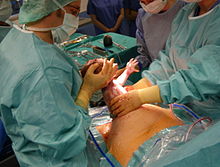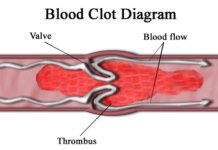When Megan Stratton was told by her doctor that she would have to undergo a cesarean section, or c-section, to deliver her second child, “it made me upset and angry.” She had undergone an emergency cesarean at only 30 weeks for her first child, and the thought of going through that again scared her. “I cried for four hours after scheduling the procedure,” Stratton recalls. Nevertheless, the birth of her second child went smoothly. Stratton is not alone in her frustration to have a natural birth after a cesarean delivery.

The Centers for Disease Control (CDC) National Vital Statistics Report states that the cesarean rate for first births was 27.1% in 2003, the most recent data available. However, the number jumps to 89.4% when these women have another child. Thus, only about 11% of women gave birth naturally after undergoing a cesarean.
According to the 2005 book Williams Obstetrics, “In the past 40 years, the rate of cesarean deliveries has jumped from about 1 out of 20 births to about 1 out of 4 births”. The CDC says that, 32% of all deliveries in 2007[PDF] were by cesarean.
A cesarean section is a surgical procedure in which one or more incisions are made on the woman’s abdomen and uterus. This is done to deliver one or multiple babies. It is usually performed when vaginal birth could risk the health of the child or the mother. Other reasons for a scheduled cesarean section include the baby’s head is not down close to the due date, the mother has heart disease or an infection that could be transmitted through vaginal birth, more than one baby, and having a previous cesarean section, according to www.webmd.com. Unplanned cesareans occur if there are problems with the labor, labor has slowed or stopped, baby shows signs of distress, or the baby is too large to be delivered vaginally.
Many cesareans are done on women who had low risk births. According to the 2003 CDC National Vital Statistics Report, 23.5% of total births by cesarean are low risk pregnancies. Of repeat cesareans, 88.7% were low risk pregnancies.
The risk of a vaginal birth after cesarean (VBAC) is uterine rupture, which is when the baby breaks through the uterine wall and into the mother’s abdominal cavity. This leads to an emergency cesarean section, according to Roger Harms, M.D., an obstetrician at Mayo Clinic. Uterine rupture is rare, affecting fewer than 2 out of 100 women who've had a prior low transverseuterine incision—the most common type of c-section incision, says Harms.
It is also important to consider future pregnancy. If there are plans for future children, VBAC is the safer procedure, according to Harms. “For 20 to 40 percent of women who attempt VBAC, labor ends in a repeat c-section,” he says.

This work is licensed under a Creative Commons Attribution-NonCommercial-NoDerivs 3.0 Unported License














this was a realy nice atricle i didnt no this was a way a baby can come out.
Thanks for sharing about a highly relevant topic- everyone was born after all! And it’s even more relevant to my wife and I, since we’re expecting a child in August. I appreciated your usage of multiple credible sources, as well, so I’m confident I can trust your reporting, and share the news with my wife!
:congrate The information was very insightful but i wish i would have read it earlier when my sister was going through a c-section with her first born. But the information helped a lot cause now i know what is in store for someone else i know that is having the procedure.
:smile i thought it was important!
every baby have to be born.
:wah :arhh im tooooooo young to know about this stuff
wow! i learned alot! i finally know what a cesarean section is . :smile
I liked your article. my sister and I were born C-section.